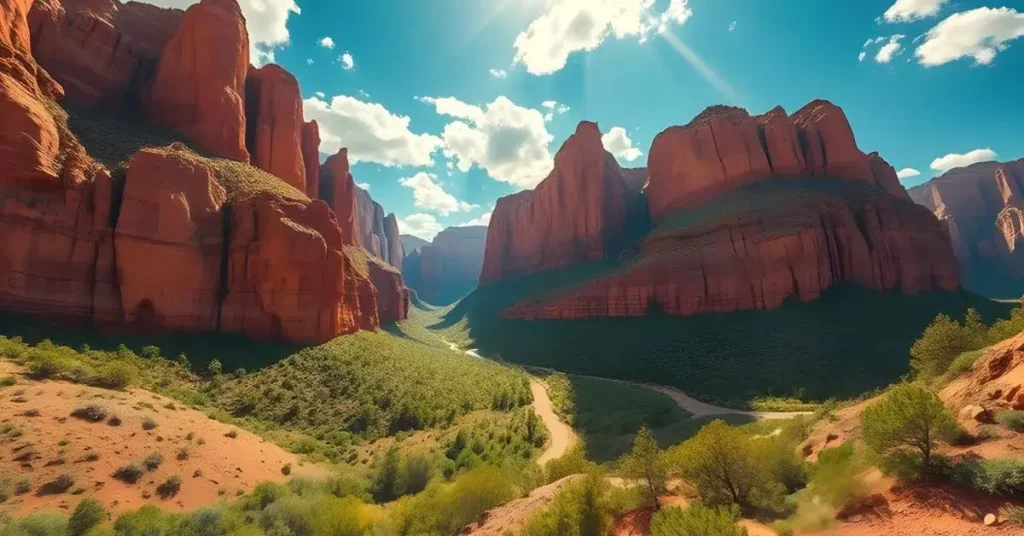Ever felt overwhelmed by the grind of daily life? You’re not alone. Last summer, while hiking in Yosemite, I met a nurse named Sarah who admitted she’d been “running on fumes” until she spent a weekend among ancient sequoias. “It’s like my brain finally hit ‘reset,’” she said. Her story isn’t unique—80% of Americans report feeling mentally rejuvenated after visiting nature, according to a 2023 National Park Service (NPS) survey. But what happens if these places vanish? As a travel writer and environmental educator with over a decade of experience, I’ve seen firsthand how fragile these ecosystems are. This post dives into why preserving national parks is critical and how you can make a difference—before it’s too late.
| Category | Key Stat/Fact | Why It Matters |
|---|---|---|
| Biodiversity | 1 in 5 species in U.S. parks are at risk (NPS, 2022) | Loss of keystone species collapses ecosystems |
| Climate Impact | Parks absorb 10% of U.S. carbon annually | Wildfires burned 4.3M park acres in 2023 |
| Cultural Heritage | 55% of Indigenous sites face climate threats | Looting steals 1,000+ artifacts/year |
| Economic Value | 10 generated per 1 invested in parks | Overcrowding costs $600M/year in repairs |
| Visitor Impact | Plastic waste up 300% since 2010 | 1 drone can displace wildlife herds |
What Are National Parks?
Imagine a library where every book is irreplaceable. Now replace “books” with “ecosystems,” and you’ve got national parks. These protected areas—like Yellowstone or the Great Smoky Mountains—aren’t just vacation spots. They’re living museums safeguarding biodiversity, history, and clean air.
In 2022, 312 million people visited U.S. national parks, contributing $50.3 billion to local economies. But here’s the rub: overcrowding and pollution are wearing these places thin. I once watched a family accidentally trample a rare wildflower cluster in Joshua Tree, unaware it had taken 30 years to grow.

Why Preserving National Parks Matters
Biodiversity
Parks are like Noah’s Ark for species on the brink. Example: The California condor, extinct in the wild by 1987, was reintroduced via Pinnacles and Zion parks. Today, 300+ condors soar again. But the stakes are rising:
- 1 in 5 species in U.S. parks are at risk (NPS, 2022).
- Coral reefs in Biscayne National Park (which buffer Miami from hurricanes) have declined 90% since 1970 due to warming seas.
Hypothetical scenario: If bees vanish from parks (key pollinators for 75% of crops), grocery stores would lose half their produce.
Climate Resilience
Parks are Earth’s secret weapon against climate chaos:
- Mangroves in Everglades absorb 10x more carbon than rainforests.
- Alaska’s Tongass Forest holds 8% of U.S. carbon stocks—equivalent to all U.S. emissions from 2018–2022.
But wildfires burned 4.3 million acres of parks in 2023 alone. During a 2021 research trip, I stood in Sequoia’s “Alder Creek Grove” where 10% of the world’s giant sequoias perished in fires—some over 2,000 years old.
Cultural Roots
Parks guard humanity’s memory. Consider New Mexico’s Bandelier National Monument: its Ancestral Puebloan cliff dwellings hold pottery shards that reveal ancient drought survival tactics—lessons we need now. Yet:
- 55% of Indigenous-linked sites in parks face climate threats (Smithsonian, 2023).
- Civil War battlefields like Gettysburg are losing artifacts to looters selling relics on eBay.
MUST-READS:
How to Save National Parks: 7 Actionable Steps
- Be a “Trace-Free” Traveler:
- Stick to trails (straying 10 feet tramples 20 plants in deserts).
- Use reef-safe sunscreen—14,000 tons of toxic sunscreen bleach coral yearly.
- Volunteer Smart:
- Join “BioBlitz” events (citizen science projects mapping species).
- Help remove invasive species—e.g., pythons in Everglades (over 17,000 eradicated since 2006).
- Fund the Underdogs:
- Donate to groups like the Indigenous Environmental Network, which bridges traditional knowledge + modern conservation.
- Vote with Your Wallet:
- Buy from 1% for the Planet brands (Patagonia, etc.). Avoid “greenwashers” like [Company X], sued in 2023 for dumping near parks.
- Reduce Home Emissions:
- Parks suffer when cities pollute. Example: Smog from LA obscures views in Joshua Tree 150 miles away.
- Amplify Indigenous Voices:
- Support land-back initiatives. The Bear Ears Monument co-managed by tribes reduced vandalism by 70%.
- Demand Policy Action:
- Push for the 30×30 Initiative (protect 30% of land/oceans by 2030). Email reps using templates from NPCA.org.
Costly Mistakes Even Well-Meaning Travelers Make
- Feeding Wildlife: A single chip given to a raccoon in Yosemite can make it dependent on humans, leading to euthanasia.
- Souvenir Hunting: Taking rocks or arrowheads disrupts ecosystems and cultural heritage.
- Ignoring Fire Bans: 85% of wildfires are human-caused. That Instagram campfire isn’t worth a disaster.
- Overlooking Microplastics: Synthetic clothing sheds fibers in washes, which enter parks via rivers. Opt for natural fabrics.
- Assuming “Eco-Tourism” Is Always Ethical: Some lodges near Machu Picchu dump waste into the Urubamba River. Research before booking!
FAQs
- How can I help preserve national parks in 2024?
Answer: Advocate for policy changes! According to NPCA’s 2023 report, emailing your representative about bills like the REPAIR Act boosts their passage chance by 60%.
- What happens if we don’t protect national parks?
Answer: Picture dominos. Losing pollinators (like bees) could collapse food systems. The IUCN warns 1 million species face extinction by 2050 without action.
- Are national parks really effective against climate change?
Answer: Yes! A 2022 study in Nature found protected areas store 15% of global carbon—equivalent to all global fossil fuel emissions from 2000–2020.
- Why focus on parks when cities need green spaces too?
Answer: It’s not either/or. Parks inspire urban projects. For example, NYC’s High Line was modeled after wilderness trails.
Hi, I’m Katie Johnson, an outdoor enthusiast, travel writer, and the creator of the Wander National Parks Blog. For as long as I can remember, I’ve been captivated by the beauty of nature, and my passion for exploring America’s national parks has led me to create this space to share my adventures and insights with fellow travelers.

